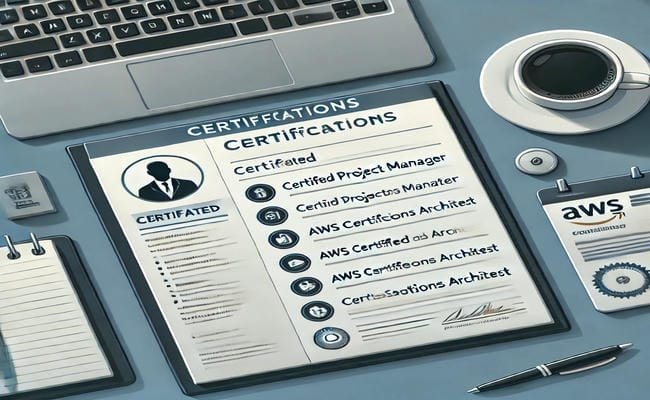
How To Layout 108X72 Quilt Backing For 81X87 Quilt
January 16, 2025
How To Retrieve Broken Latch From R230 Glove Box
January 17, 2025Including certifications on your resume is a strategic way to showcase your skills and qualifications. Whether you’re applying for a new job or updating your professional profile, here’s how to effectively list certifications on your resume with guidance from WonConsulting.
Why List Certifications on Your Resume?
- Showcase Expertise: Highlight your specialized knowledge and industry-recognized skills.
- Stand Out: Certifications set you apart from other candidates.
- Build Credibility: Demonstrate your commitment to professional growth and excellence.
Steps to List Certifications on Your Resume
- Choose Relevant Certifications:
- Include certifications that are directly related to the job you’re applying for.
- Avoid listing outdated or irrelevant certifications.
- Create a Dedicated Section:
- Title the section as “Certifications” or “Professional Certifications.”
- Place it prominently, either under the “Education” section or in its own category.
- Format Your Certifications:
- Use a consistent format for clarity. Include:
- Certification Name (e.g., Certified Project Manager).
- Issuing Organization (e.g., PMI – Project Management Institute).
- Date Earned or Expiry Date (if applicable).
- Credential ID or License Number (optional).
- Use a consistent format for clarity. Include:
Example:
Certified Scrum Master (CSM)
Scrum Alliance – Earned: March 2022
- Prioritize Key Certifications:
- List certifications in order of relevance to the job.
- Highlight certifications required for the role at the top of the section.
- Incorporate Into Your Professional Summary:
- Mention critical certifications in your summary or objective statement.
- Example: “Certified Data Analyst with expertise in SQL, Python, and Tableau.”
- Mention critical certifications in your summary or objective statement.
Also Read: How To Layout 108X72 Quilt Backing For 81X87 Quilt
Tips for Success
- Keep It Updated: Regularly update your resume with newly earned certifications.
- Use Proper Titles: Ensure the certification names are accurate and spelled correctly.
- Tailor for Each Job: Customize the list based on the job description and employer requirements.
Examples of Certifications to List
- IT and Technology:
- AWS Certified Solutions Architect
- Microsoft Certified: Azure Fundamentals
- Project Management:
- PMP (Project Management Professional)
- PRINCE2 Practitioner
- Healthcare:
- Certified Nursing Assistant (CNA)
- BLS (Basic Life Support)
Common Mistakes to Avoid
- Listing Irrelevant Certifications: Stick to certifications that enhance your application.
- Overcrowding the Section: Avoid clutter by focusing on the most important credentials.
- Omitting Details: Ensure each certification entry is complete and professional.
Conclusion
Properly listing certifications on your resume demonstrates your qualifications and sets you apart from other candidates. By following these guidelines and leveraging insights from WonConsulting, you can effectively present your credentials and boost your chances of success.




